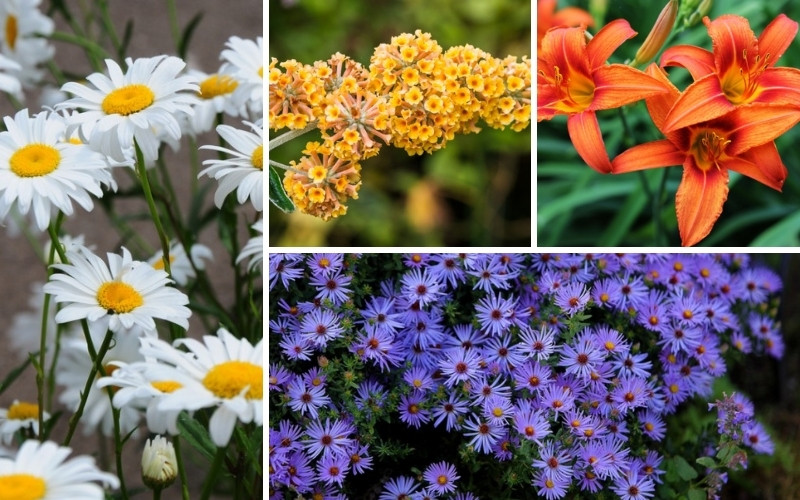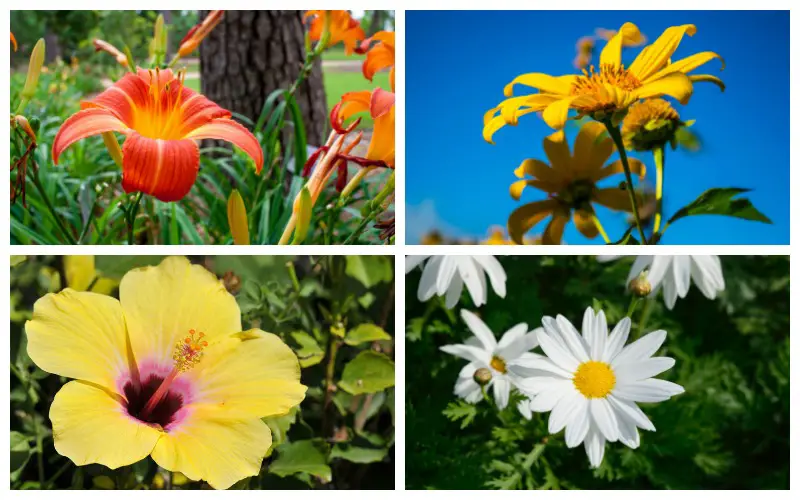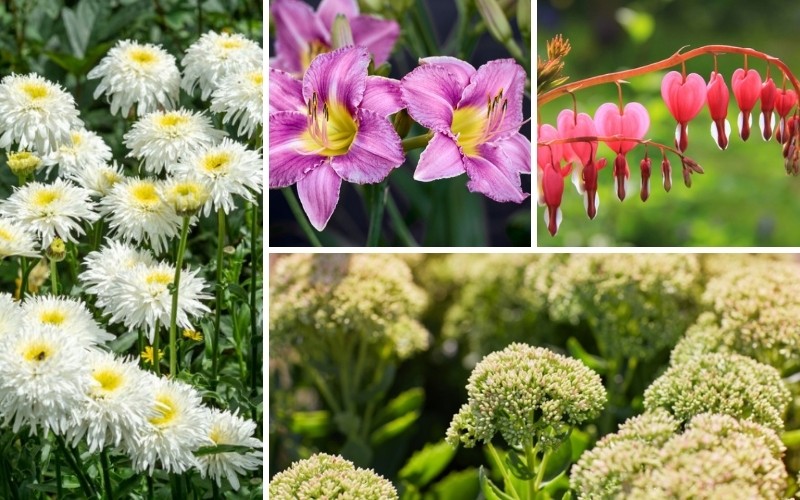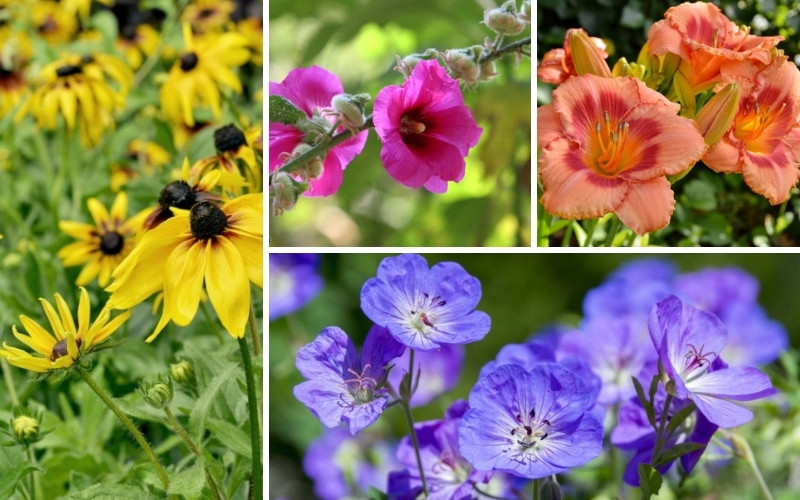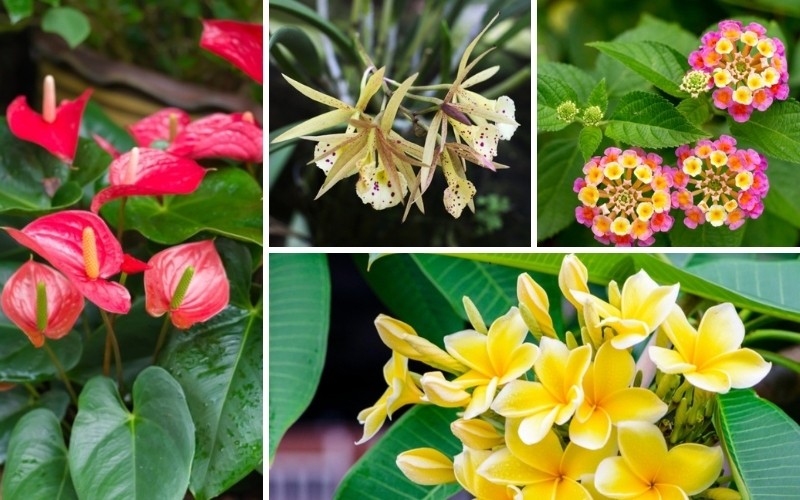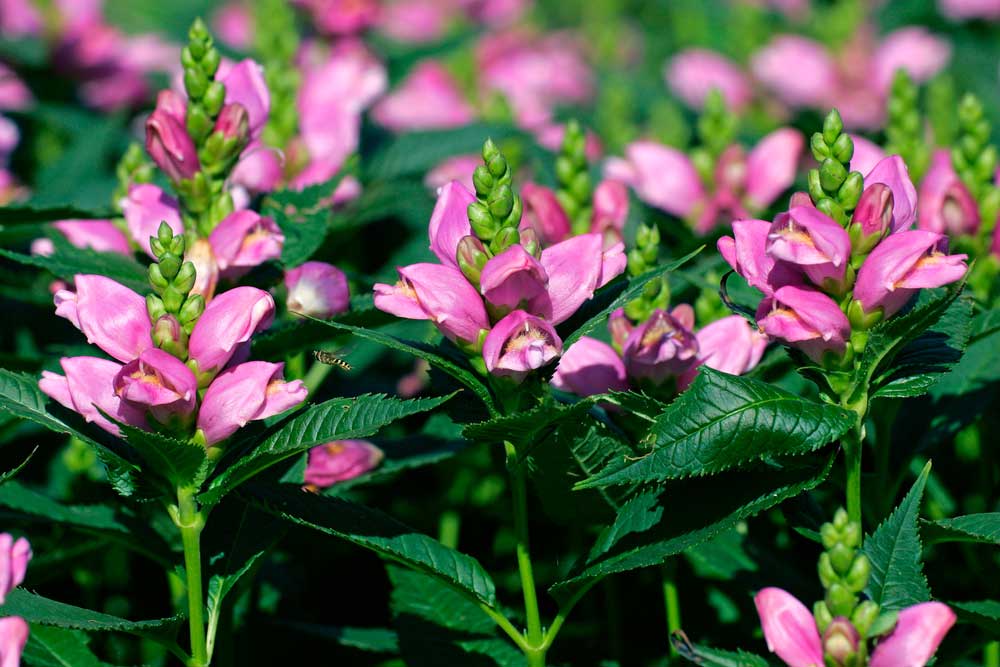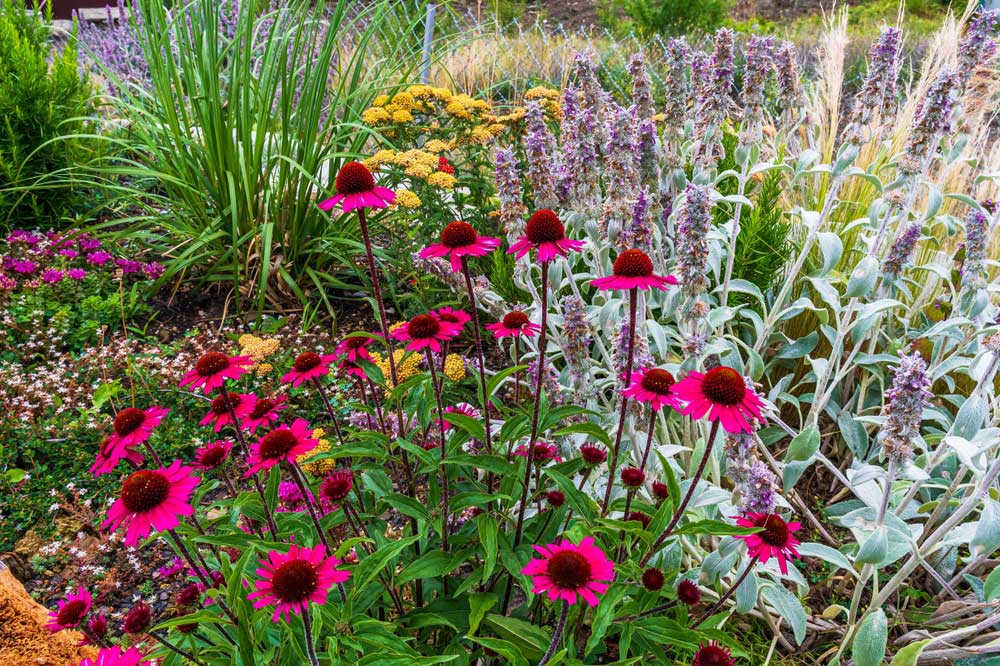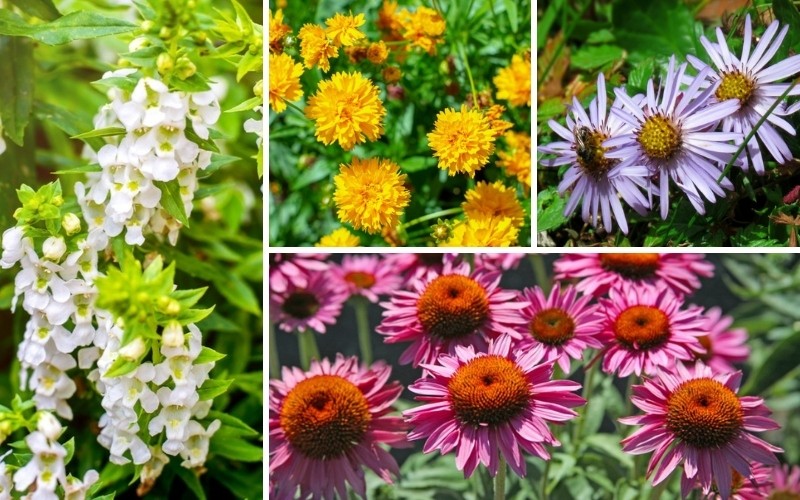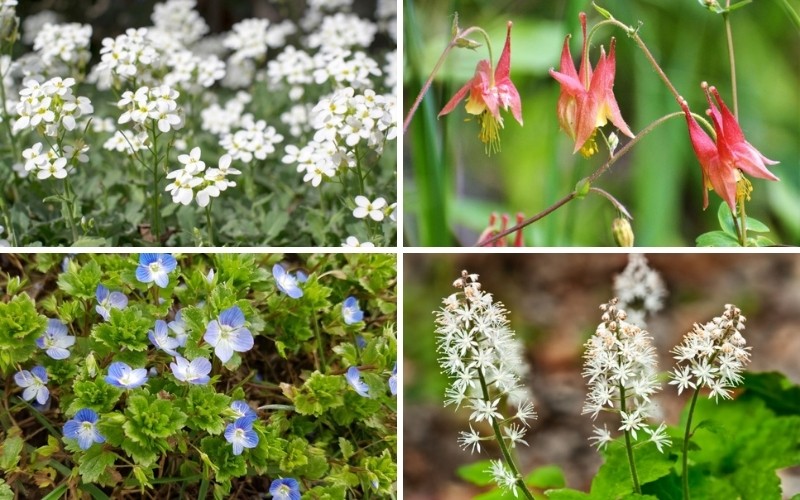Gardening in hot and dry conditions can be challenging, but with the right perennials, your garden can not only survive but thrive. You’ll discover a range of robust plants that can withstand heatwaves and drought without sacrificing beauty and color.
Whether you’re an experienced gardener or a novice, choosing the right plants is crucial for success. By selecting perennials that are well-adapted to these harsh conditions, you can create a stunning, low-maintenance garden that looks great throughout the year.
1. Lavender
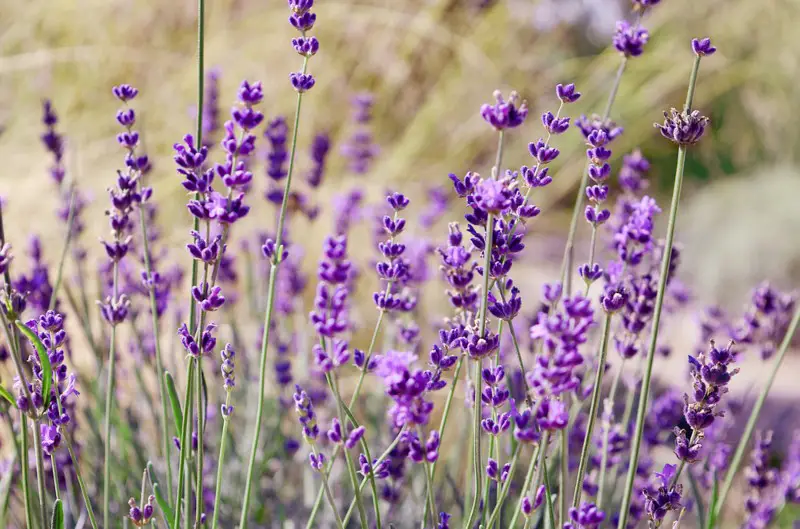
Lavender is a delightful addition to any garden with its beautiful purple blooms and soothing fragrance.
You’ll love how it thrives in hot and dry conditions, making it perfect for low-maintenance gardens.
Plus, it attracts pollinators like bees and butterflies, adding life and movement to your outdoor space.
2. Russian Sage
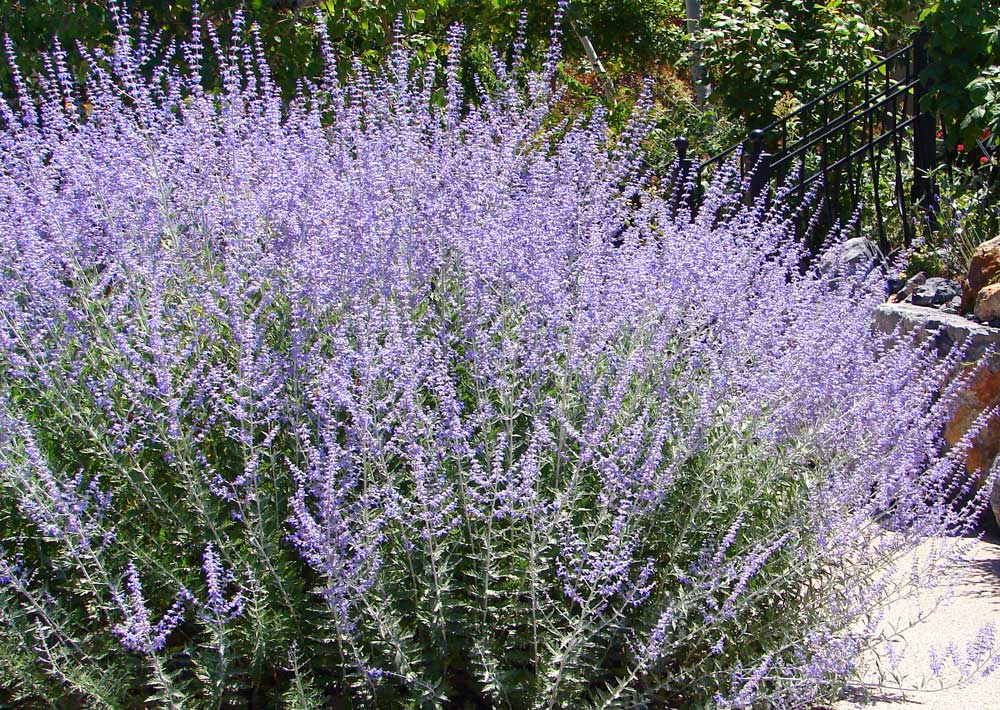
Looking for a resilient plant that adds a splash of color to your garden? Try Russian Sage. You’ll love its beautiful, lavender-blue flowers.
Russian Sage thrives in hot and dry conditions, making it perfect for drought-prone areas. Its silvery-gray foliage adds a unique touch to any landscape.
This hardy perennial is also low-maintenance and deer-resistant. You won’t need to worry much once it’s planted.
3. Blanket Flower
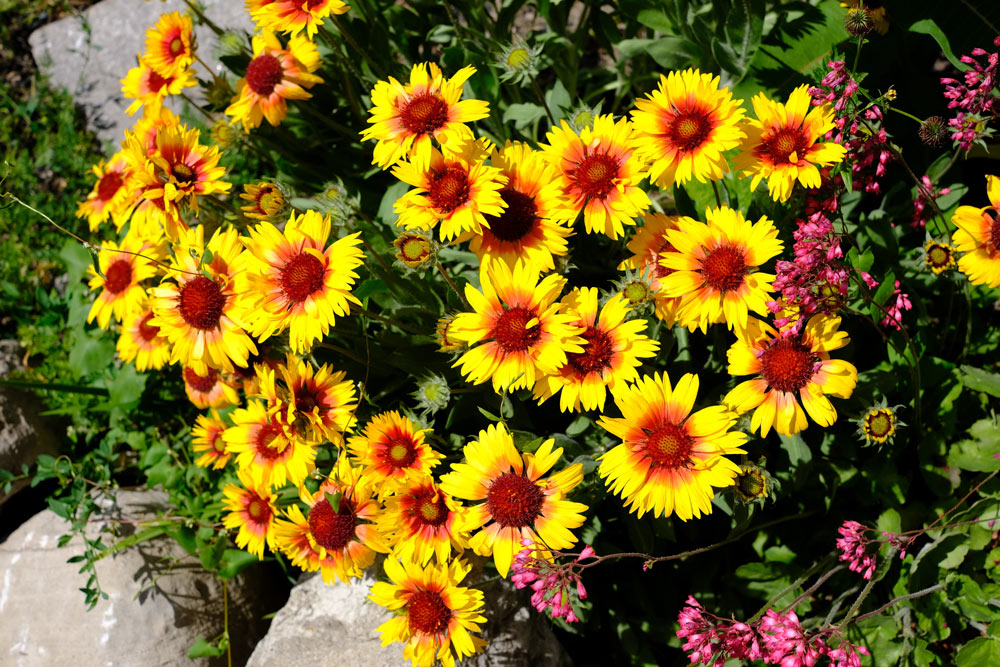
The Blanket Flower, also known as Gaillardia, is a vibrant addition to any garden. It boasts bright, daisy-like blooms in shades of red, orange, and yellow.
This perennial thrives in full sun and needs minimal watering, making it perfect for heat and drought conditions. You’ll love how it attracts bees and butterflies, adding life to your garden.
4. Sedum
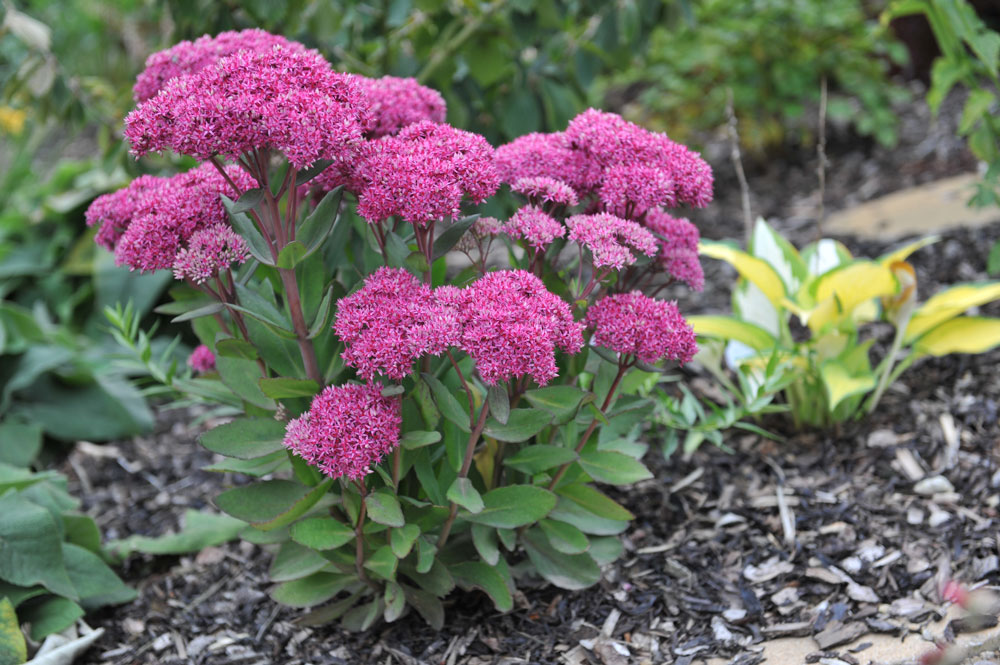
Sedum is a fantastic choice for dry gardens. These hardy succulents thrive in poor soil and require minimal water. You’ll love their thick, fleshy leaves that store water efficiently.
Sedum blooms in late summer to fall, adding vibrant colors to your garden. They’re low maintenance and attract butterflies, enhancing your outdoor space with both beauty and wildlife.
5. Yarrow
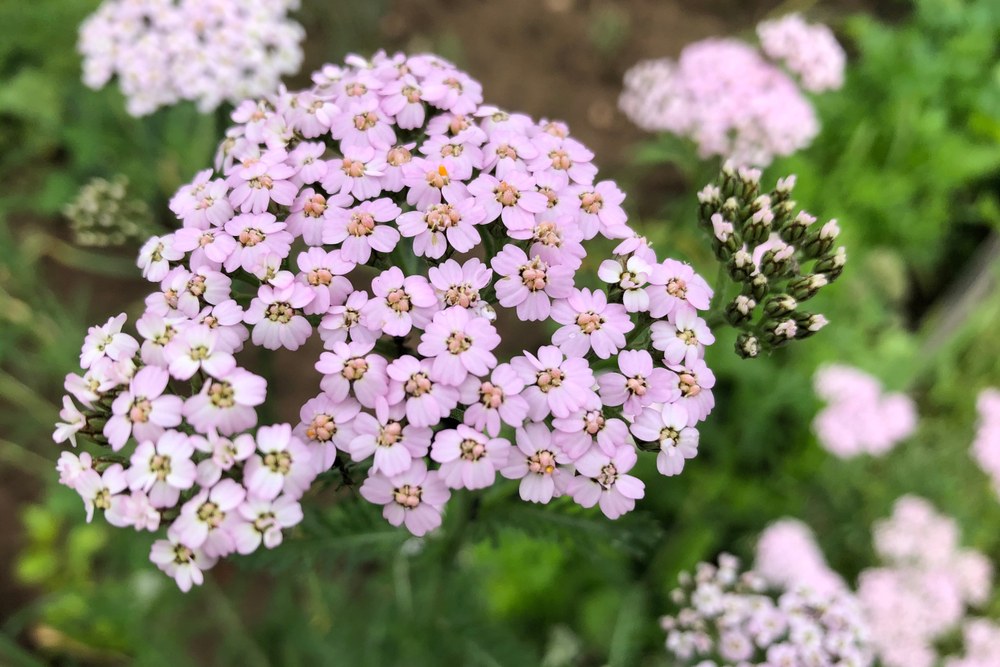
Yarrow is a tough perennial that thrives in heat and dry conditions. Its feathery leaves and brightly colored flowers add a splash of color to any garden.
You’ll love how low-maintenance it is. It can easily survive with minimal watering and care.
Plus, yarrow attracts beneficial pollinators like butterflies and bees to your garden.
6. Coneflower
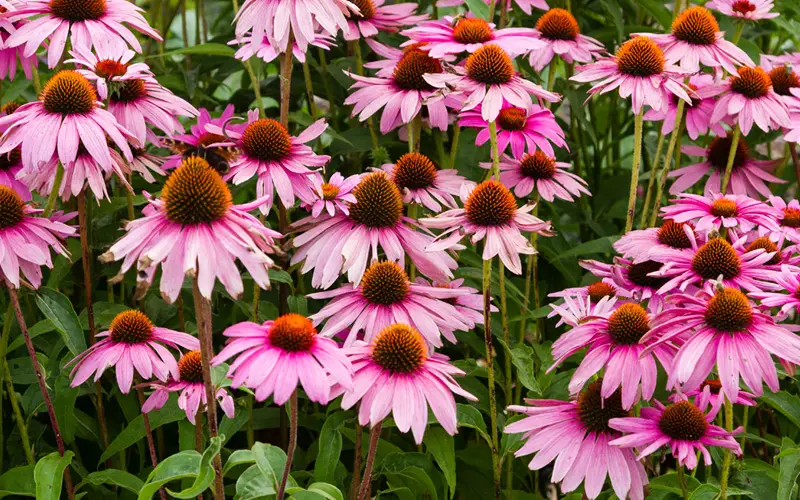
Coneflower, also known as Echinacea, is a resilient choice for your garden.
These flowers thrive in hot, dry conditions and bloom from midsummer well into fall.
Their vibrant purple petals and distinctive spiky centers attract pollinators like bees and butterflies.
With minimal watering needs, they are perfect for sunny spots in your landscape.
Coneflowers also offer medicinal properties, often used in herbal remedies for boosting immunity.
7. Black-Eyed Susan
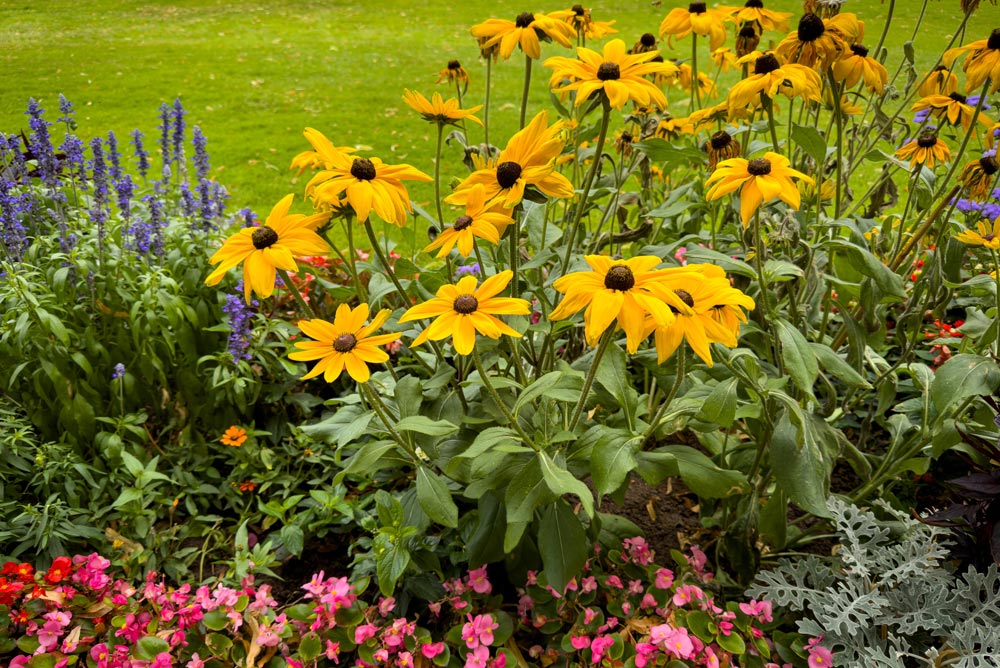
Black-Eyed Susan brings vibrant yellow blooms to your garden.
These flowers thrive in hot, dry conditions, making them ideal for drought-prone areas.
You’ll appreciate their resilience and long-lasting beauty throughout the summer months. Plant them in full sun for best results.
Their low maintenance needs make your gardening experience a breeze.
8. Agastache
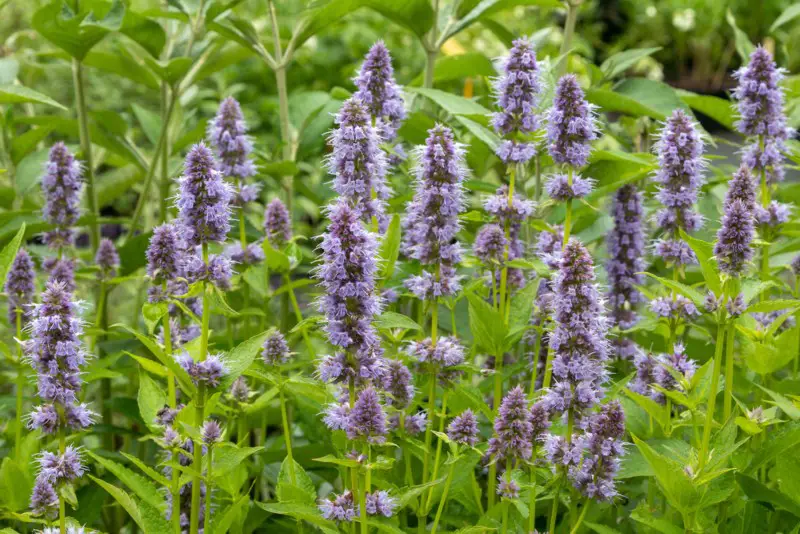
Agastache, commonly known as hyssop, is a resilient perennial perfect for heat and drought conditions.
You’ll enjoy its aromatic foliage and vibrant, tubular flowers that attract hummingbirds and butterflies.
Plant Agastache in well-draining soil and full sun to see it thrive while requiring minimal water and care.
9. Dianthus
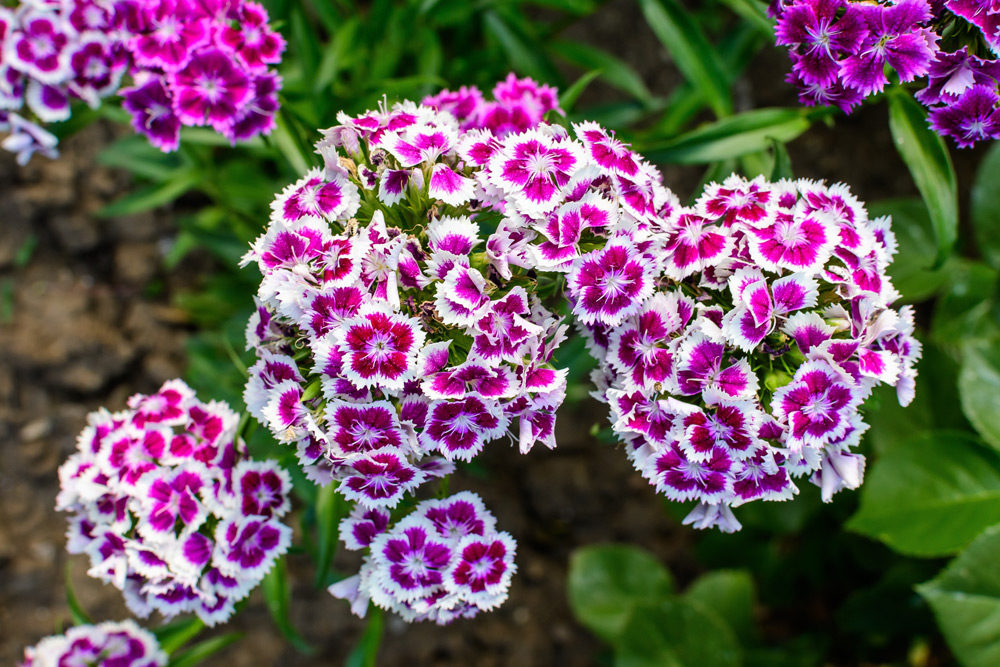
Dianthus, also known as pinks, are charming perennials that stand out in any garden. They produce beautiful, often fragrant, flowers in shades of pink, red, and white.
These hardy plants thrive in hot, dry conditions. They prefer full sun and well-drained soil. You can enjoy their blooms from late spring to early summer.
With minimal care, Dianthus adds a splash of color and a delightful scent to your outdoor spaces.
10. Evening Primrose
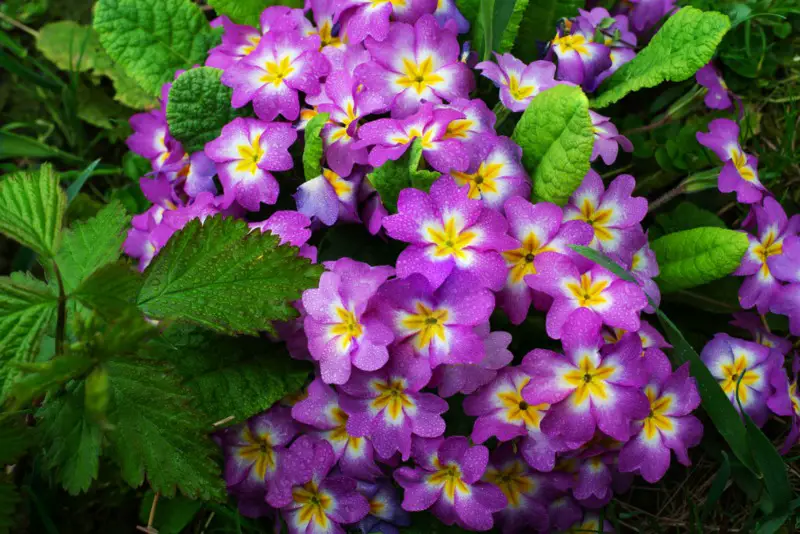
Evening Primrose is a robust perennial perfect for hot, dry climates. You’ll enjoy its bright yellow flowers that open in the evening and attract pollinators.
This plant is low-maintenance. Just provide well-drained soil and full sun. Once established, it requires minimal watering. Its deep roots help it thrive during drought periods.
Enjoy the resilience and beauty Evening Primrose brings to your garden, even under tough conditions.
11. Daylily
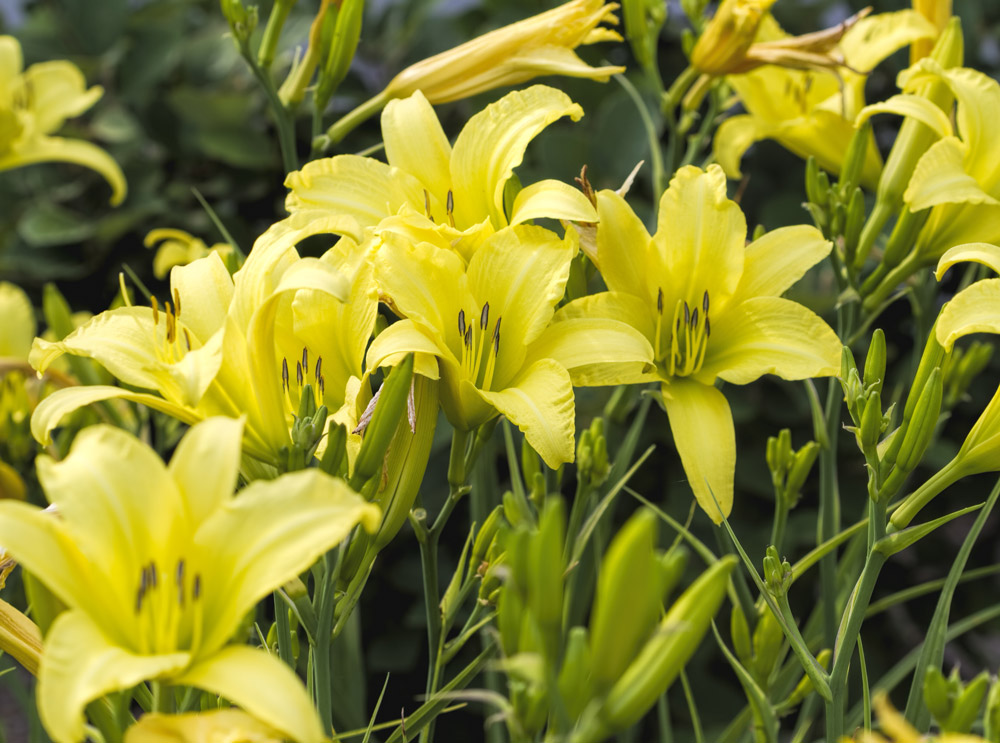
Daylilies are versatile and hardy, thriving in both heat and drought conditions. They come in a variety of colors, adding vibrant hues to your garden.
These perennials are low-maintenance, making them perfect for gardeners of all skill levels. They bloom repeatedly throughout the season.
Plant them in well-drained soil, and they will reward you with stunning flowers year after year. Daylilies truly shine under the sun’s intense rays.
12. Lantana
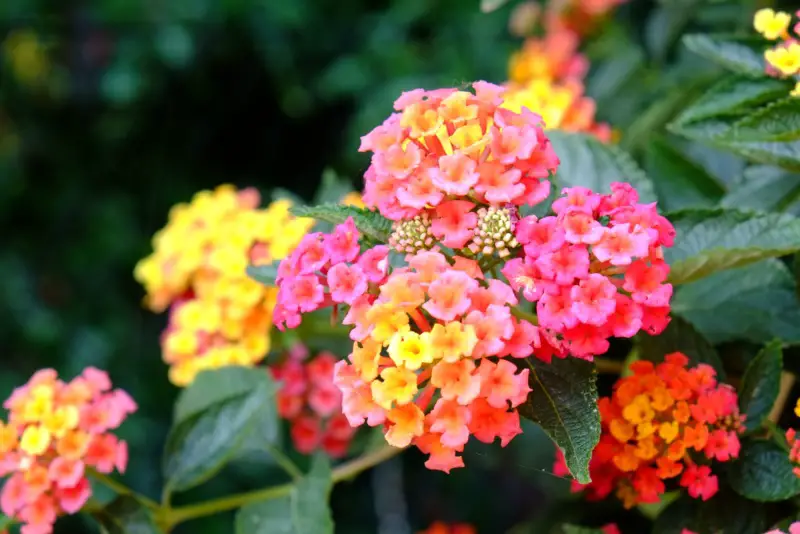
Lantana is a vibrant addition to your garden, offering a mix of colors from red to yellow to purple.
You’ll find it thrives in hot, sunny spots where other plants might struggle.
Resistant to drought, it’s a low-maintenance option that brings continuous blooms throughout the summer and into the fall.
13. Verbena
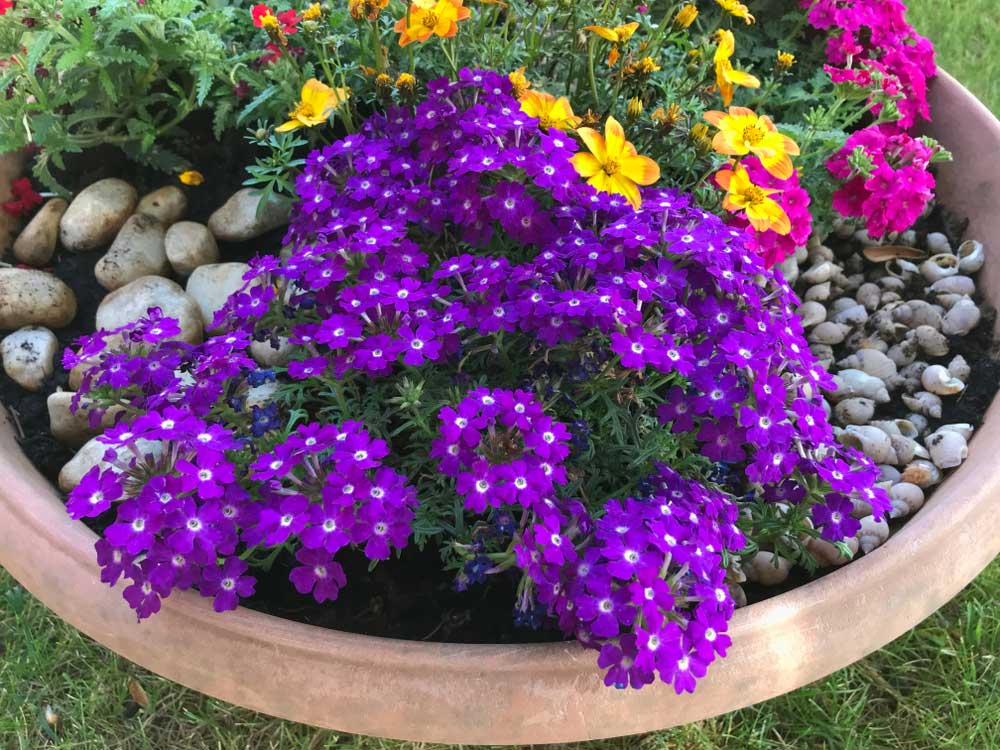
Verbena is a top choice for gardens facing intense heat and drought.
You will love its colorful clusters that can brighten up any space.
This hardy plant requires minimal water, making it perfect for low-maintenance gardening.
Plus, Verbena attracts pollinators like bees and butterflies, adding life to your garden.
14. Catmint
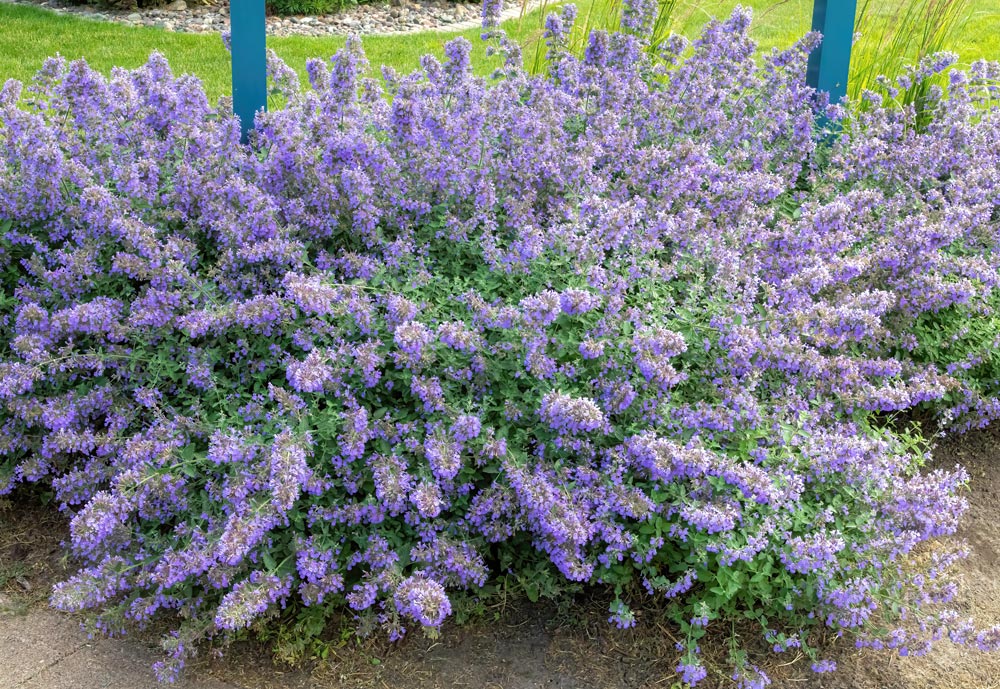
Catmint is a great choice for your garden. It’s incredibly hardy and thrives in hot, dry conditions.
With its lovely lavender-blue flowers and aromatic foliage, it attracts bees and butterflies. Plus, it’s easy to grow and requires minimal care.
You’ll enjoy the long blooming season, from late spring through summer. This plant is perfect for adding color and resilience to your garden.
15. Goldenrod
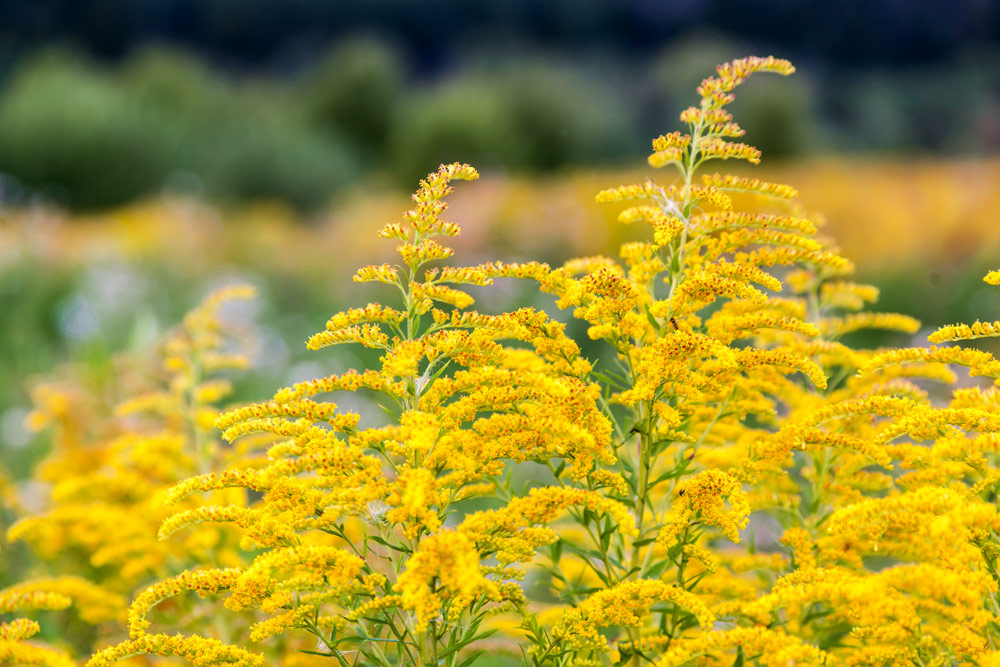
Goldenrod thrives in heat and drought conditions, making it a perfect choice for your garden. This resilient perennial boasts bright yellow flowers that attract pollinators like bees and butterflies. It’s easy to care for and adds a splash of color, even in the hottest months. Consider planting goldenrod to enhance your garden’s beauty and resilience.
Understanding Heat-Tolerant Perennials
Heat-tolerant perennials thrive in high temperatures and dry conditions. They require less maintenance and water, making them ideal for sustainable gardening.
What Makes a Perennial Heat-Tolerant?
Heat-tolerant perennials have adapted to survive in hot climates. Key features include:
- Deep Root Systems: These enable plants to access underground water sources.
- Thick Leaves: Often waxy or fuzzy, they reduce water loss.
- Efficient Water Use: Minimizing water waste is crucial in their survival.
Examples include Lavender and Russian Sage. Select plants based on your climate and soil type for optimal results.
Benefits of Planting Heat-Tolerant Perennials
Planting heat-tolerant perennials can save you time and resources. Benefits include:
- Water Conservation: These plants require less irrigation.
- Low Maintenance: They thrive with minimal care, enduring extended droughts.
- Long-Lasting Blooms: Many offer vibrant colors and blooms throughout the season.
Incorporate these plants into your garden to create a resilient, beautiful landscape.
Soil and Watering Tips for Drought-Resistant Gardens
Ensuring your garden thrives in drought conditions involves preparing the right soil and utilizing efficient watering techniques. These two aspects will help your plants maintain health and resilience through the hottest, driest days.
Soil Preparation for Optimal Plant Health
To support drought-resistant plants, focus on amending your soil to enhance moisture retention and drainage. Start by incorporating organic matter such as compost or aged manure. These materials improve soil structure, allowing for better water infiltration and root growth.
Using mulch is critical. Apply a 2-3 inch layer of mulch around your plants. This helps retain soil moisture, reduces temperature fluctuations, and minimizes evaporation. Options like wood chips, straw, or grass clippings work well.
Consider the soil’s pH level, as some drought-resistant plants prefer slightly acidic or alkaline conditions. Test your soil and adjust accordingly using lime to raise pH or sulfur to lower it. Aeration is also key; it allows air and water to reach plant roots more efficiently. Use a garden fork to gently aerate the soil without disturbing the plants.
Efficient Watering Strategies
For drought-resistant gardens, efficient watering is essential. Drip irrigation systems are ideal. They deliver water directly to the plant’s root zone, minimizing wastage and evaporation. Install emitters at each plant to control the amount of water each receives.
Watering in the early morning is best. This reduces evaporation losses and gives plants time to absorb water before the heat intensifies. Investigate and use rainwater harvesting methods. Collecting and storing rainwater in barrels provides a sustainable water supply for dry periods.
Group plants with similar water needs. This helps tailor your watering schedule, ensuring each plant gets the right amount without over- or under-watering. Deep watering is more beneficial than frequent shallow watering. It encourages roots to grow deeper, making plants more resilient during drought.
Proper soil preparation and efficient watering strategies can transform your garden into a productive and beautiful drought-resistant oasis.
Creating a Heat-Resilient Garden
Building a garden that thrives in hot, dry conditions requires selecting durable plants and using effective moisture-retaining practices. This will ensure your garden stays lush and vibrant through the challenging summer months.
Choosing the Right Plant Combinations
Selecting plants with similar water and sunlight needs ensures that they thrive together. For a heat-resilient garden, choose drought-tolerant perennials like Lavender, Sedum, and Yarrow. These plants not only withstand high temperatures but also add beauty to your garden.
Pairing plants with complementary growth habits, such as tall ornamental grasses with ground-covering succulents, can create a cohesive and visually appealing setup.
Mulching Techniques to Retain Moisture
Mulching helps your soil retain moisture, reduce temperature fluctuations, and suppress weed growth. Use organic mulches like wood chips, straw, or compost. These materials break down over time, enriching the soil with nutrients.
Apply mulch in a 2-4 inch layer around your plants, making sure to keep it away from the stems to prevent rot. Inorganic mulches such as gravel or stones can also be effective, especially in hot climates. They retain heat during the day and release it at night, moderating soil temperature.





